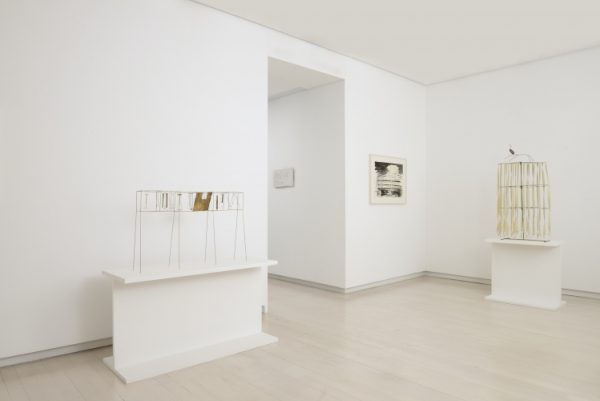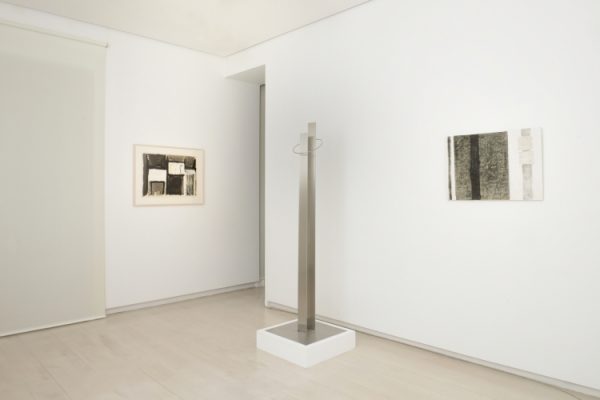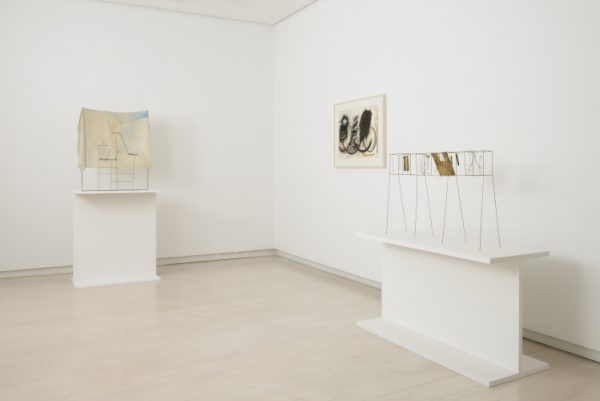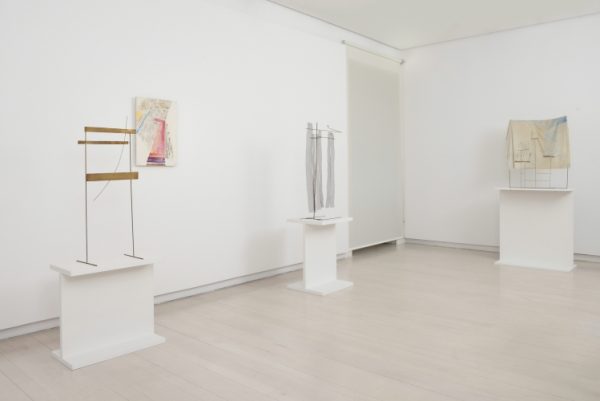Fausto Melotti
MADRID
GALERÍA ELVIRA GONZÁLEZ
6 novembre 2014 / 10 gennaio 2015
On November 6th Galería Elvira González will present an exhibition of work by Fausto Melotti. The exhibition -the Italian artist’s second at the gallery-brings together 14 sculptures, 8 bas-reliefs in plaster and clay, 5 ceramic works and 7 drawings on cardboard and paper.
As the art critic and historian Valeriano Bozal wrote in the catalogue that has been published in conjunction with the exhibition, Melotti “created a world of suggestion and evocation in his sculptures, ceramics, paintings and drawings”.
A key characteristic of Melotti’s work is its lightness, as well as its search for a personal narrative language that is at once airy, cheerful and suggestive. Melotti “forms part of the group of contemporary artists who are reluctant to make emphatic statements and who convert fragility into one of their central tenets,” as Bozal has written. “Minimal material elements, in elementary structures, emphasizing the potential for flexibility, verticality and horizontality.”
Together with this gracefulness, experimentation is also one of Melotti’s characteristic resources. He worked with ceramics from the earliest stages of his career and never abandoned this medium. As Bozal writes, “experimentation with new materials is a constant” in Melotti’s work. Melotti’s range is evident is the selection of works on view at Galería Elvira Gonzalez, which include Canone orientale variato II (1971), a series of graceful figures made of tin; the iron sculpture Arte del contrappunto plastico n. 1 (1969); as well as in the series of bas-reliefs in clay and in mixed-media on plaster.
Fausto Melotti (Rovereto, 1901 -Milan, 1986) studied at the Faculty of Physics and Mathematics at the University of Pisa, while at the same time studying piano and taking classes in sculpture with the artist Pietro Canonica. in 1928 he enrolled at the Accademia di Brera in Milan where he studied under Adolfo Wildt and was a classmate of Lucio Fontana, forming lasting friendships with both artists. From that point onward Melotti began prolifically producing drawings, paintings and poems. After WWII Melotti developed an interest in ceramics, and he later received Grand Prix at the Triennale di Milano in 1951 as well as gold medals in Prague and Munich.
Melotti participated in the project by Figini and Pollini for the Palazzo delle Forze Armate in Rome, and also worked with Gio Ponti in two large-scale projects: the Villa Planchart in Caracas (1956) and the Villa Nemazee in Tehran (1960). His work has been exhibited in numerous museum exhibitions around the world, including a retrospective exhibition of his work held in 1979 at the Palazzo Reale in Milan, and two years later at the Forte Belvedere in Florence. In 1986, just a few days after his death, he was awarded the Leon de Oro Prize at the 46th Venice Biennial.
Melotti’s first exhibition in Spain took place at the Elvira González Gallery in 2005, and was accompanied by a catalogue with texts by Francisco Calvo Serraller.




